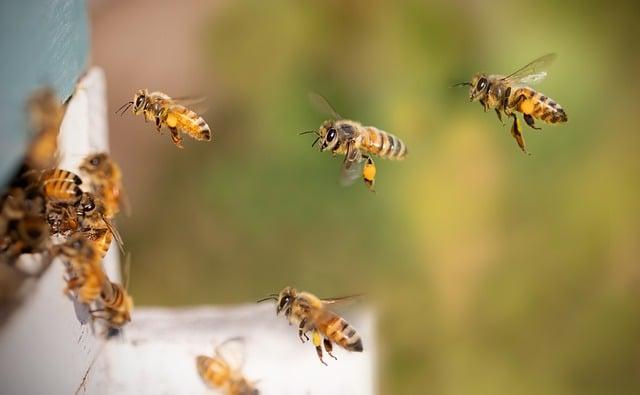When it comes to treating our beloved canine companions, many pet owners find themselves wondering if the occasional human indulgence can safely be shared with their furry friends. Honey, with its natural sweetness and myriad of health benefits for humans, often finds its way into this conversation. But can dogs eat honey, and if so, how much is safe? In this article, we’ll explore the potential benefits and risks of feeding honey to your dog, providing you with essential information to make informed decisions. Whether you’re considering honey as a remedy for minor ailments or simply as a sweet treat, understanding its effects on your dog’s health is crucial. Let’s delve into what you should know about incorporating honey into your dog’s diet, ensuring their safety and well-being while satisfying their curious palate.
Understanding the Benefits of Honey for Dogs
Many dog owners might be surprised to learn that honey can offer a variety of health benefits for their furry friends. Known for its natural sweetness, honey is not only a tasty treat but also a potential remedy for some common canine ailments. Rich in antioxidants, honey can help support your dog’s immune system, combating free radicals and reducing inflammation. Additionally, honey’s natural antimicrobial properties can aid in healing minor cuts and wounds when applied topically.
Including honey in your dog’s diet can also help soothe allergies. Local honey, containing small amounts of pollen, may help build immunity to seasonal allergens. Some other potential benefits include:
- Digestive Aid: Honey can promote a healthy digestive tract by encouraging the growth of good bacteria.
- Energy Boost: The natural sugars in honey provide a quick energy boost for active dogs.
- Cough Relief: A small amount of honey can help soothe a dog’s throat and reduce coughing.
As with any treat, moderation is key. It’s always wise to consult your veterinarian before introducing new foods to your dog’s diet, ensuring that your furry companion reaps the benefits without any adverse effects.

Potential Risks and Precautions When Feeding Honey to Your Dog
While honey can offer some benefits for dogs, it’s important to be aware of potential risks and take necessary precautions. Botulism risk is a concern, particularly for puppies and dogs with compromised immune systems, as raw honey can contain spores of Clostridium botulinum. To minimize this risk, it’s advisable to opt for pasteurized honey. Another consideration is sugar content. Honey is high in natural sugars, which can lead to weight gain or exacerbate conditions like diabetes in dogs if consumed in large quantities. Moderation is key to ensuring your furry friend enjoys the benefits without adverse effects.
- Introduce honey gradually: Start with a small amount to observe any reactions.
- Consult your vet: Always seek professional advice, especially if your dog has existing health conditions.
- Monitor for allergies: Watch for signs of allergic reactions such as itching, swelling, or digestive issues.
- Choose the right type: Opt for organic or raw honey that is free from additives.

How to Safely Introduce Honey into Your Dogs Diet
Introducing honey into your dog’s diet requires a gentle approach to ensure it suits their unique digestive system. Start with a small amount, perhaps a teaspoon for small dogs or a tablespoon for larger breeds. Monitor your furry friend for any signs of allergies or digestive discomfort, such as vomiting or diarrhea. If they seem to tolerate it well, you can consider making honey a more regular treat.
- Check with your vet: Before introducing honey, consult your veterinarian, especially if your dog has diabetes or is overweight.
- Choose raw, unprocessed honey: This type retains more nutrients and is less likely to contain additives.
- Avoid honey for puppies: Their developing immune systems can be sensitive to the bacteria found in honey.
Remember, moderation is key. Honey is high in sugar, so it should only be a small part of a balanced diet. Use it as an occasional treat or a natural sweetener for homemade dog treats, always keeping an eye on your dog’s overall health and energy levels.

Expert Tips for Choosing the Right Type of Honey for Your Canine Companion
Choosing the perfect honey for your furry friend involves more than just picking up any jar from the shelf. Quality matters, and here are some expert tips to guide you:
- Opt for Raw Honey: Raw honey retains more nutrients and enzymes compared to processed honey. It’s less likely to contain additives, making it a healthier option for your dog.
- Consider the Source: Look for honey that is locally sourced and organic. This ensures fewer pesticides and a higher likelihood of purity.
- Check for Allergies: Some dogs may have pollen allergies, so it’s wise to introduce honey slowly and observe any reactions.
- Moderation is Key: Even the best honey should be given in moderation. Start with a small amount to see how your dog reacts.
By choosing wisely, you can make honey a delightful and beneficial treat for your canine companion.

